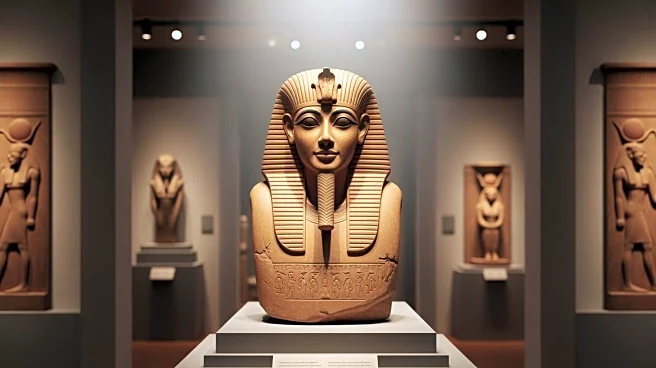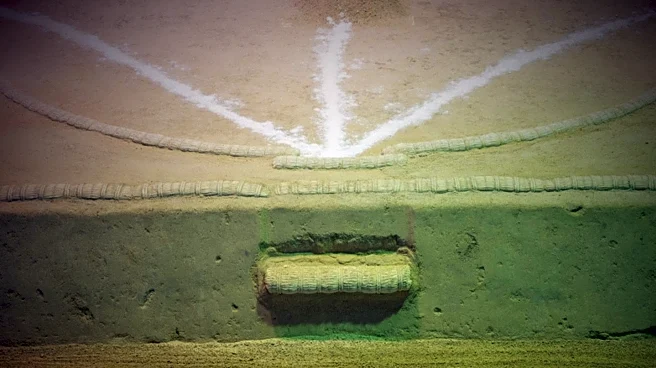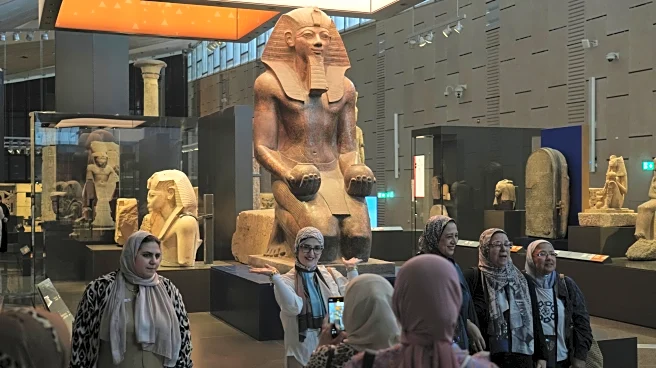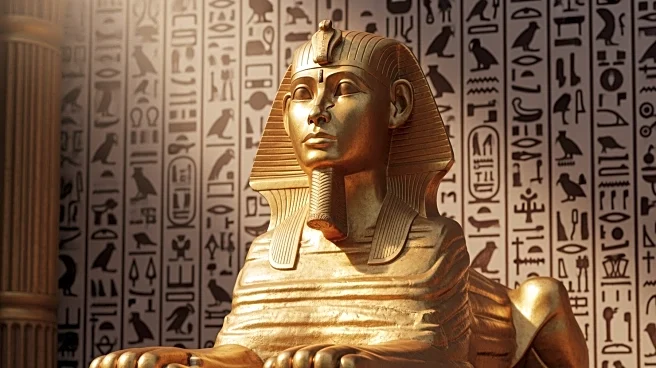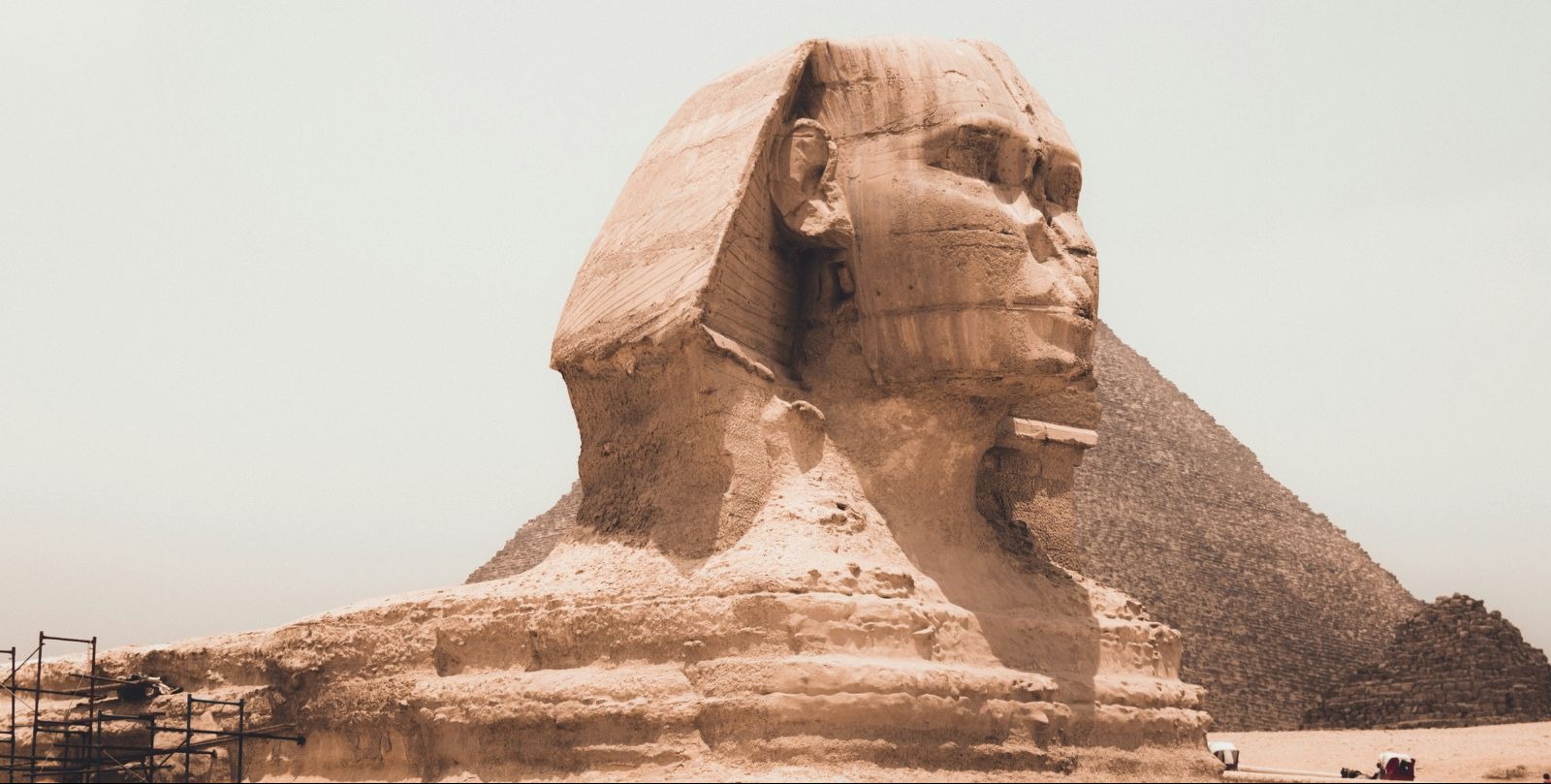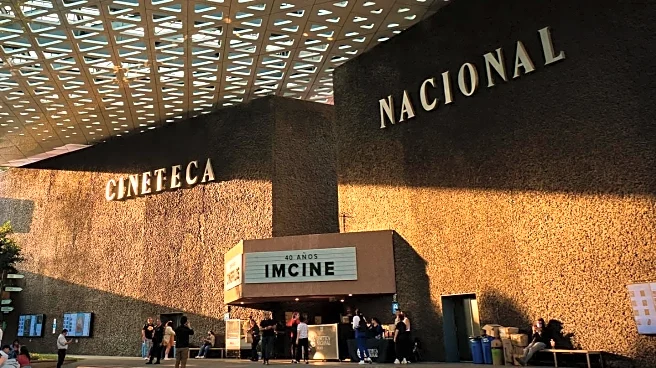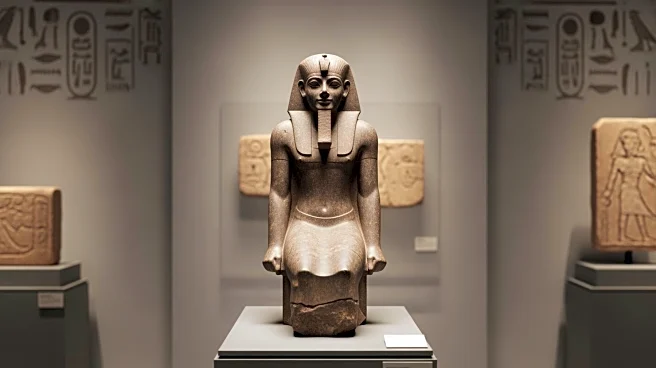What's Happening?
The Grand Egyptian Museum (GEM) has officially opened to the public, marking a significant milestone in Egypt's cultural and archaeological history. Located near the pyramids of Giza, the museum spans
nearly 500,000 square meters and houses over 100,000 artefacts from ancient Egypt's 30 dynasties. Key attractions include the statue of King Ramses II, Tutankhamun's treasures, and a 4,500-year-old boat belonging to Pharaoh Khufu. The museum's design, by Irish architecture firm Heneghan Peng, echoes the geometry of the pyramids and features sand-colored concrete and translucent alabaster stone. The project faced delays due to political turmoil and the COVID-19 pandemic but is now open to visitors.
Why It's Important?
The opening of the Grand Egyptian Museum is a major boost for Egypt's tourism sector, a vital source of foreign currency. The museum is expected to attract millions of visitors, enhancing Egypt's cultural prestige and economic growth. It also serves as a testament to Egypt's commitment to preserving its rich heritage, offering insights into ancient civilization and fostering global interest in archaeology. The museum's extensive collection provides educational opportunities and promotes cultural exchange, reinforcing Egypt's position as a leader in historical preservation.
What's Next?
With the museum now open, Egypt anticipates a surge in tourism, potentially increasing revenue and supporting economic development. The museum's exhibitions will continue to evolve, offering new insights into ancient Egypt. Future collaborations with international institutions may enhance the museum's offerings and global reach. Additionally, the museum's success could inspire similar projects in other countries, promoting cultural preservation worldwide.
Beyond the Headlines
The museum's opening may influence cultural diplomacy, strengthening Egypt's ties with other nations through shared historical interests. It also raises questions about the role of large-scale cultural projects in national identity and economic strategy. The museum's design and construction reflect advancements in architectural technology, showcasing how modern techniques can preserve ancient history.


